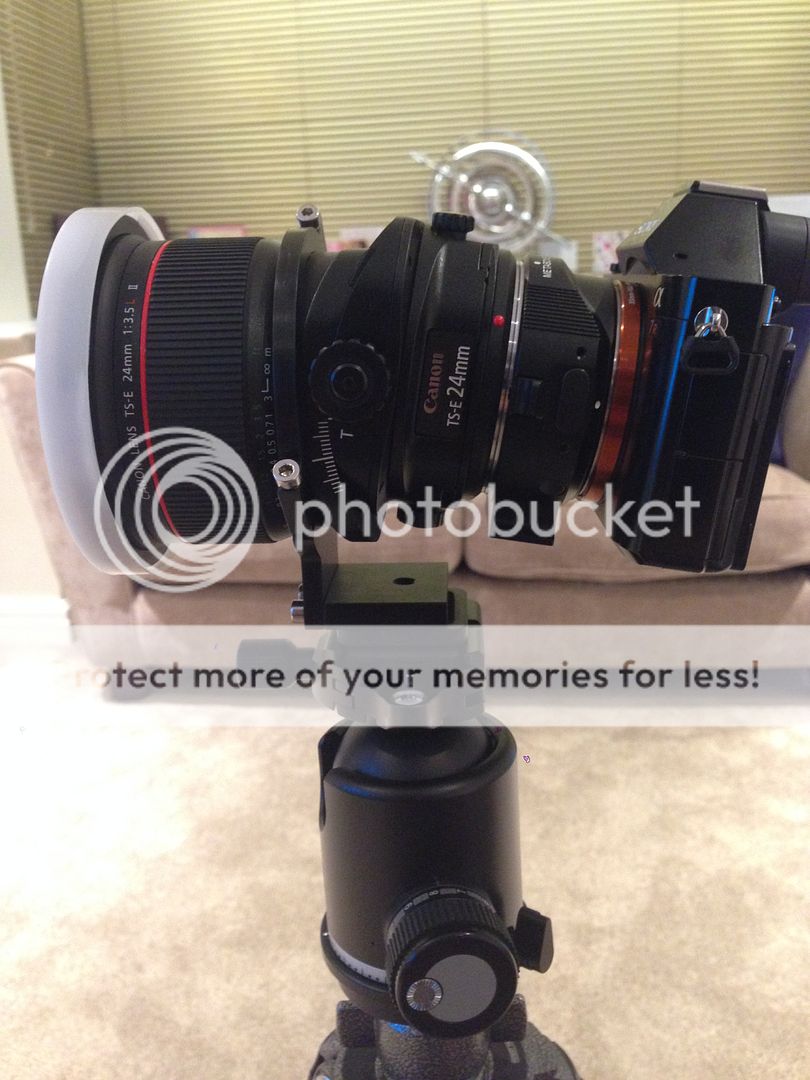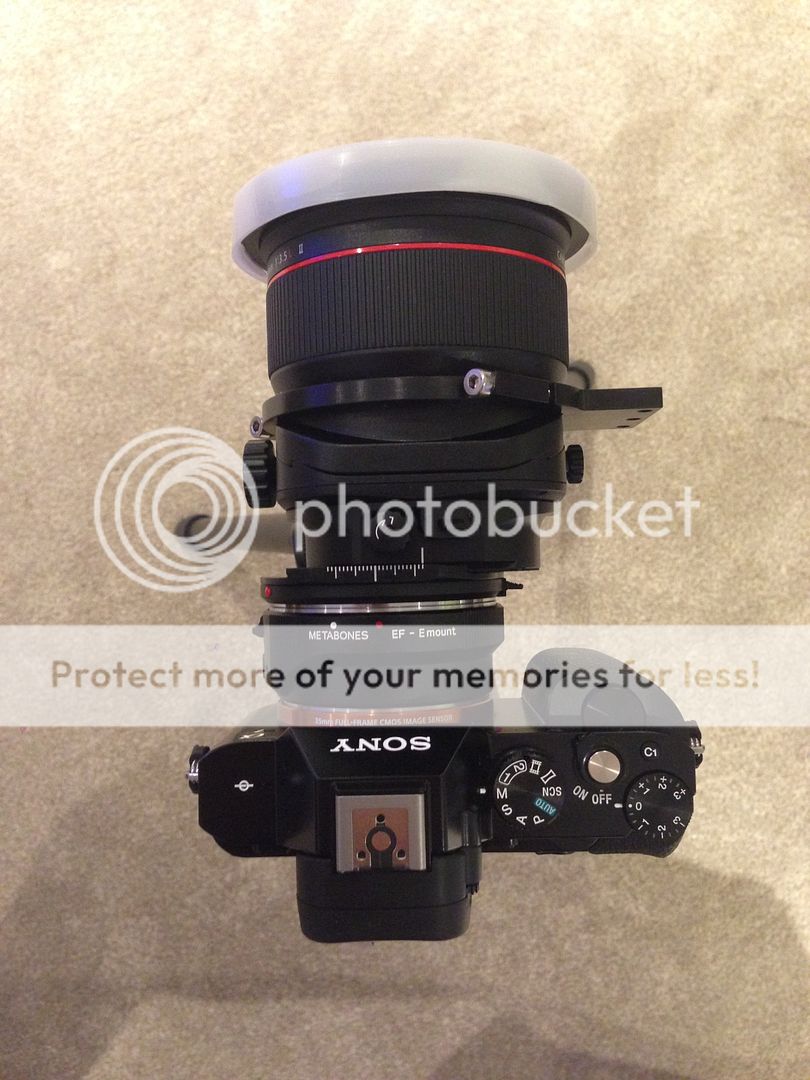- Messages
- 640
- Name
- Ross
- Edit My Images
- No
Recently got a tilt shift so I can shift the lens to create pano's.
the setup I have is a collar that grips the lens, which then mounts the tripod so the camera slides left and right and the lens stays still (the avoid parallax issues)
I've been reading about tilting downwards recently for DOF but all of the articles I've read are written in a way that assume the lens will be tilting, where as I can't find an article that discusses what will happen if the camera were to be the component that tilts.
Anyone know of such an article?
the setup I have is a collar that grips the lens, which then mounts the tripod so the camera slides left and right and the lens stays still (the avoid parallax issues)
I've been reading about tilting downwards recently for DOF but all of the articles I've read are written in a way that assume the lens will be tilting, where as I can't find an article that discusses what will happen if the camera were to be the component that tilts.
Anyone know of such an article?



